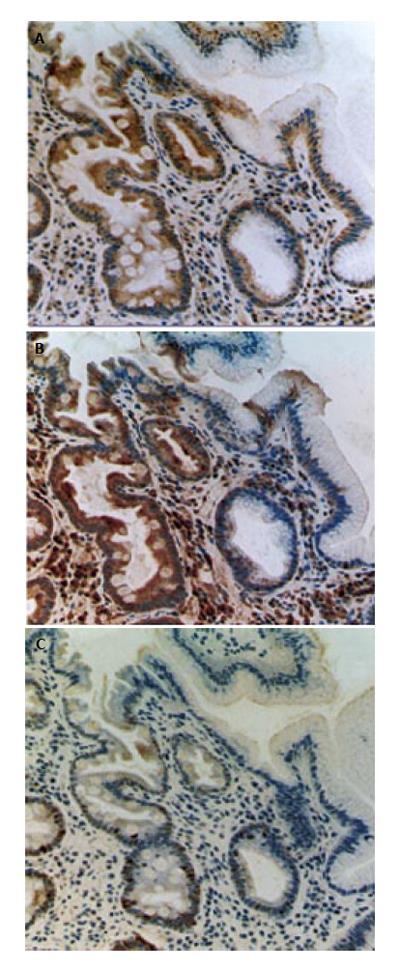Copyright
©2006 Baishideng Publishing Group Co.
World J Gastroenterol. Mar 21, 2006; 12(11): 1671-1680
Published online Mar 21, 2006. doi: 10.3748/wjg.v12.i11.1671
Published online Mar 21, 2006. doi: 10.3748/wjg.v12.i11.1671
Figure 1 Expression of COX-2, nitrotyrosine and Ki-67 immunoreactivity in human gastric mucosa with intestinal metaplasia after cure of the H pylori infection.
A: COX-2 immunostaining; B: nitrotyrosine immunostaining; C: Ki-67 immunostaining. The overexpression of COX-2 and nitrotyrosine, adduct of nitric oxide, are reported in gastric mucosa with H pylori infection[66,68,70,71]. In these photographs, metaplastic gland with goblet cells (in the left side of each photograph) and non-metaplastic gastric glands (in the right side) are shown. COX-2 and nitrotyrosine immunoreactivities continue to exist in gastric mucosa with intestinal metaplasia after the successful H pylori eradication with PPI-triple therapy.
- Citation: Tsuji S, Tsujii M, Murata H, Nishida T, Komori M, Yasumaru M, Ishii S, Sasayama Y, Kawano S, Hayashi N. Helicobacter pylori eradication to prevent gastric cancer: Underlying molecular and cellular mechanisms. World J Gastroenterol 2006; 12(11): 1671-1680
- URL: https://www.wjgnet.com/1007-9327/full/v12/i11/1671.htm
- DOI: https://dx.doi.org/10.3748/wjg.v12.i11.1671









